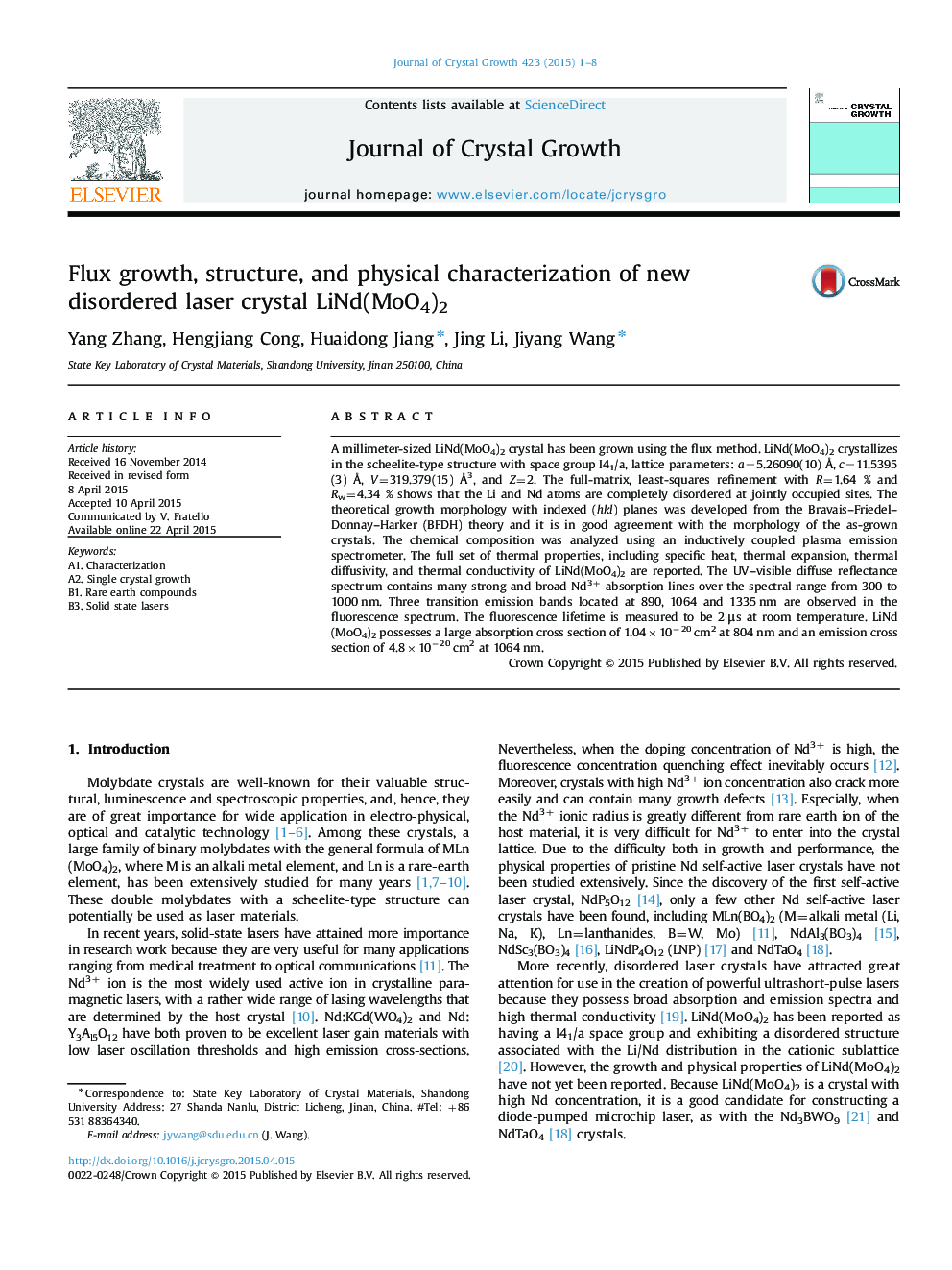| Article ID | Journal | Published Year | Pages | File Type |
|---|---|---|---|---|
| 1790007 | Journal of Crystal Growth | 2015 | 8 Pages |
•A millimeter-sized LiNd(MoO4)2 crystal has been grown by the flux method.•The thermal and spectral properties were measured for the first time.•A comparison of properties was made between LiNd(MoO4)2 and other laser crystals.
A millimeter-sized LiNd(MoO4)2 crystal has been grown using the flux method. LiNd(MoO4)2 crystallizes in the scheelite-type structure with space group I41/a, lattice parameters: a=5.26090(10) Å, c=11.5395(3) Å, V=319.379(15) Å3, and Z=2. The full-matrix, least-squares refinement with R=1.64 % and Rw=4.34 % shows that the Li and Nd atoms are completely disordered at jointly occupied sites. The theoretical growth morphology with indexed (hkl) planes was developed from the Bravais–Friedel–Donnay–Harker (BFDH) theory and it is in good agreement with the morphology of the as-grown crystals. The chemical composition was analyzed using an inductively coupled plasma emission spectrometer. The full set of thermal properties, including specific heat, thermal expansion, thermal diffusivity, and thermal conductivity of LiNd(MoO4)2 are reported. The UV–visible diffuse reflectance spectrum contains many strong and broad Nd3+ absorption lines over the spectral range from 300 to 1000 nm. Three transition emission bands located at 890, 1064 and 1335 nm are observed in the fluorescence spectrum. The fluorescence lifetime is measured to be 2 μs at room temperature. LiNd(MoO4)2 possesses a large absorption cross section of 1.04×10−20 cm2 at 804 nm and an emission cross section of 4.8×10−20 cm2 at 1064 nm.
